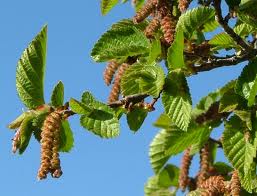Ostrya
Pot Cultivation
These trees can be grown in any cool, moist garden soil that has adequate drainage. Pruning should be done in the winter or early spring. Any side branches too low on the trunk should be cut out; only one leading shoot should be allowed per tree. Older trees rarely need to be pruned.Propagation
Sow seeds as soon as they are ripe in a compost of 3 parts loam to one part each of leaf mold and sand. Small amounts of seeds may be sown in containers, but large quantities should be sown outdoors in a prepared bed, in early spring after being stored in slightly moist sand throughout the winter. Those planted in containers should be buried in ashes out side or in a cold frame during the winter and be taken into a greenhouse, if possible, in early spring. Once the young plants are large enough to handle, they should be planted in a bed of prepared soil in the nursery. From then on, the small trees should be transplanted every other year until they are large enough for their permanent positions. |
O. Knowltonii. |
VARIETIES
- O. carpinifolia (European Hop Hornbeam);
- O. japonica (Japanese Hop Hornbeam);
- O. virginiana (American Hop Hornbeam or Ironwood);
- O. Knowltonii.




